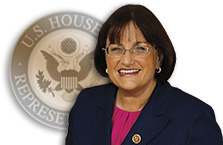Press Releases
NH Delegation Calls on Trump Administration to Prioritize Pediatric Cancer Research**A recent report from the CDC indicated that New Hampshire had the highest pediatric cancer rate in the country between 2003 and 2014.**
Washington, DC,
July 25, 2018
Yesterday, U.S. Senator Jeanne Shaheen (D-NH) sent a letter with Senator Maggie Hassan (D-NH) and Congresswomen Carol Shea-Porter (NH-01) and Annie Kuster (NH-02) calling on the Trump Administration to release information on actions taken by the Department of Health and Human Services (HHS) to examine the factors that are contributing to high pediatric cancer rates in New Hampshire and other states, including environmental contamination. In the letter, the delegation requested information specific to contributing factors to pediatric cancers in New Hampshire that may differ from those in other states, as well as details on planned action to address these factors and combat rising pediatric cancer rates and on opportunities for Granite Staters to receive information related to pediatric cancer health concerns. A recent report from the Centers for Disease Control and Prevention (CDC) indicated that between 2003 and 2014, New Hampshire had the highest pediatric cancer rate in the country—with 205 pediatric cancer cases per 1,000,000 in the population. The delegation wrote, “We are very concerned by the potential damaging public health impacts that exposure to per- and polyfluoroalkyl substances (PFAS) can have on the health and wellbeing of Granite Staters. We were alarmed by findings in a draft toxicological study recently published by the Agency for Toxic Substance and Disease Registry (ATSDR), which suggested that exposure to certain PFAS chemicals may leave children susceptible to immune system damage, which could play a detrimental role in the human body’s ability to fight off cell infections that cause diseases including cancers. Other environmental factors and exposure to carcinogens, such as radon, can also increase cancer risk. In light of the potential for contaminants and environmental factors to contribute to rising pediatric cancer rates, we strongly encourage the Department and its subagencies to continue to examine potential links.” The delegation continued, “Without a stronger interagency commitment to determining the causes and potential solutions to the growth in pediatric cancer prevalence, we will not be able to ensure that New Hampshire children and all Americans are better protected from cancer risks. We look forward to working with you to address this troubling development.” See below for the full text of the letter or click HERE: July 16, 2018 The Honorable Alex M. Azar II Secretary U.S. Department of Health and Human Services 200 Independence Ave, S.W. Washington, DC 20201 Dear Secretary Azar: The Centers for Disease Control and Prevention (CDC) recently issued a report detailing variation in pediatric cancer rates by state, which indicated that between 2003 and 2014, New Hampshire had the highest pediatric cancer rate in the country—with 205 pediatric cancer cases per 1,000,000 in the population. As you may be aware, New Hampshire health officials have also identified a pediatric cancer cluster on New Hampshire’s Seacoast. We are extremely troubled by this finding and write to request information on actions by the Department of Health and Human Services (HHS) and relevant subagencies that have been taken recently or are in progress to examine the underlying factors, including environmental contamination, that are contributing to high pediatric cancer rates in New Hampshire and other states. We are very concerned by the potential damaging public health impacts that exposure to per- and polyfluoroalkyl substances (PFAS) can have on the health and wellbeing of Granite Staters. We were alarmed by findings in a draft toxicological study recently published by the Agency for Toxic Substance and Disease Registry (ATSDR), which suggested that exposure to certain PFAS chemicals may leave children susceptible to immune system damage, which could play a detrimental role in the human body’s ability to fight off cell infections that cause diseases including cancers. Other environmental factors and exposure to carcinogens, such as radon, can also increase cancer risk. In light of the potential for contaminants and environmental factors to contribute to rising pediatric cancer rates, we strongly encourage the Department and its subagencies to continue to examine potential links. Given the enormous stakes connected to identifying the root causes of rising pediatric cancer rates, we are requesting the following information:
We also request that the Department provide briefings for the New Hampshire delegation and other interested Congressional offices on the Department’s efforts on this issue, as well as regular updates on the progress of those efforts. Without a stronger interagency commitment to determining the causes and potential solutions to the growth in pediatric cancer prevalence, we will not be able to ensure that New Hampshire children and all Americans are better protected from cancer risks. We look forward to working with you to address this troubling development. Sincerely, Cc: Dr. Robert Redfield, Centers for Disease Control and Prevention Dr. Francis Collins, National Institutes of Health Dr. Patrick Breysse, Agency for Toxic Substances and Disease Registry Dr. Norman Sharpless, National Cancer Institute Dr. Linda Birnbaum, National Institute for Environmental Health Sciences ### |
